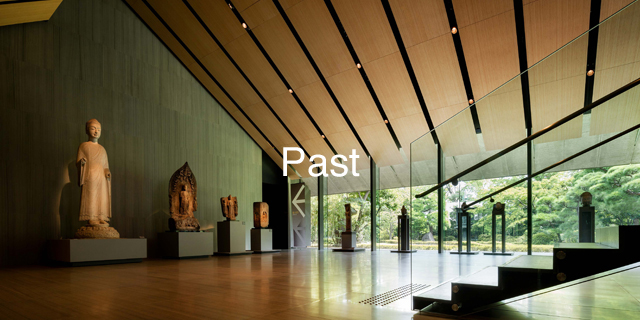
-
Museum Collection Exhibition
Cherishing Flowers, Yearning for the Moon 【ENDED】
Nature and Beauty in Japan - Thursday, July 22 - Sunday, August 22, 2021
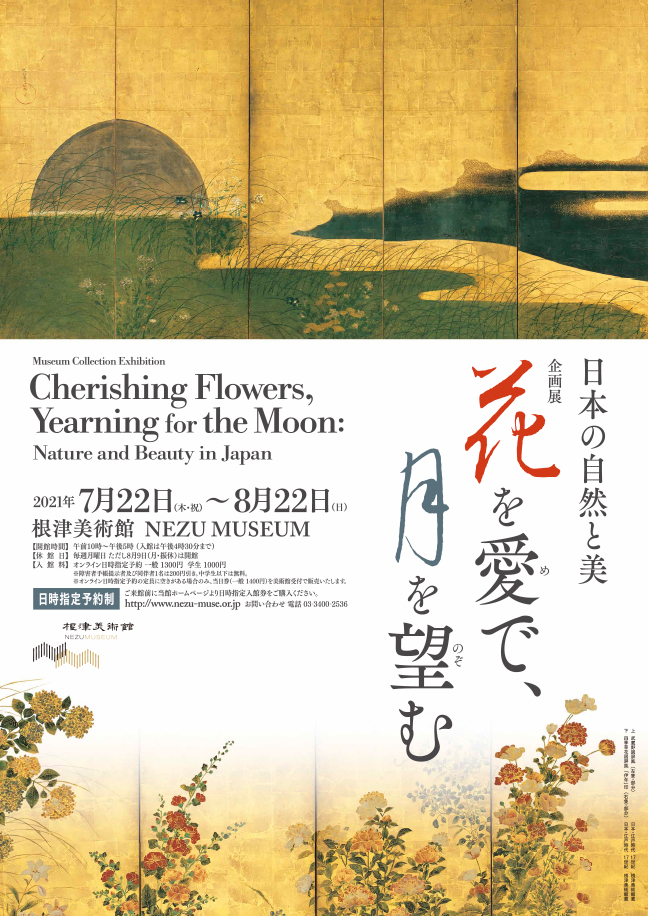

| Closed | Mondays, except August 9 |
|---|---|
| Hours | 10 a.m. - 5 p.m.(last entry: 4:30 p.m.) |
| General admission | Adult 1300 yen, Student 1000 yen |
| Gallery | 1/2 |
The people of Japan have long felt close to nature and have keenly sensed the changing seasons. Bird song and insect cries signaling a season's arrival, cherry blossoms scattered by the wind and maple leaves turning color, the moon waxing and waning: beauty is discovered in the changing seasons. That careful attention is sensitively conveyed in many waka poems and works of art that depict the flora and natural scenes specific to each season. This exhibition is composed of paintings and craft works whose motifs are taken from nature—the moon, the seasonal flora—as well as detached segments of calligraphy recording waka on those subjects. It offers an opportunity to sense Japan’s seasons and natural world through familiar objects.
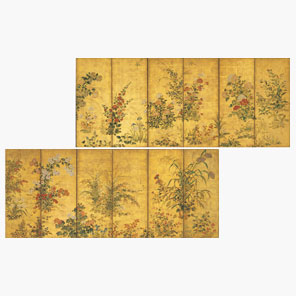

- Flowers in the Four Seasons
-
I'nen seal
Japan Edo period, 17th century
Nezu Museum - These small folding screen paintings depict the flowers of the four seasons. The seasons move from right to left, with about seventy types of plants depicted, from thistles and asters in spring to nandinas and daffodils in winter. These screens are regarded as exceptional works even among other folding screens with botanical motifs on gold-foiled ground with the I'nen seal from the Tawayara Sōtatsu studio.
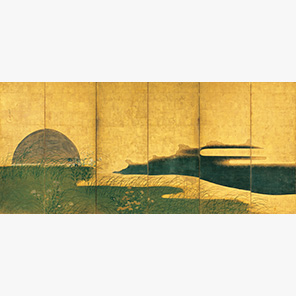

- Field of Musashino (left screen)
-
Japan Edo period, 17th century
Nezu Museum - The lefthand screen presents the silver moon halfway risen above a broad meadow, while on the right, the sun is sinking into a plain filled with autumn grasses. Musashino (now spanning from Saitama to western Tokyo and part of Kanagawa) has long been imagined as a vast plain where grasses and other plants thrive. It is also a subject in waka poems on the moon, rising or setting, among the plain’s rich greenery.
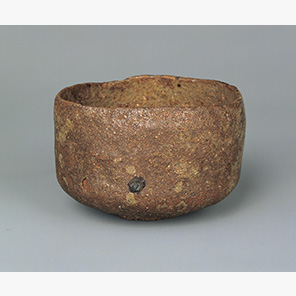

- Tea Bowl, named Musashino
-
By Hon'ami Kōho
Japan Edo period, 17th century
Nezu Museum - Kōho (1601-82), grandson of Hon’ami Kōetsu, created this tea bowl modeled on Shigaraki ware. Its box has autumn grasses arranged on its lid, along with a full moon in the form of a circular thin sheet of lead, to express the tea bowl’s name, Musashino.
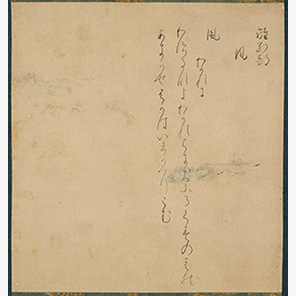

- Detached Segment of the Korenorishū Poetry Anthology
-
Japan Heian period, 11th century
Nezu Museum, gift of Uemura Wadō - This detached segment of the Korenorishū poetry anthology is from the Sakanoue Korenori anthology in the Meika kashū-gire, copies of the poem collections of six famous poets active at the Heian court. It contains one verse on the subject of wind from the Parting chapter of that collection. The poetic phrase “autumn wind” implies that, just as leaves promptly turn over in the autumn wind, I too will return forthwith.
